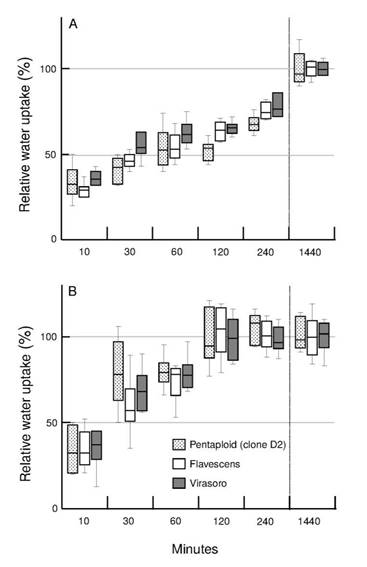Abstract:
Paspalum dilatatum Poir. is a promising perennial summer grass forage for temperate regions, but among other factors, slow stand establishment has hindered its adoption. One of the reasons may be seed dormancy. Intraspecific variability in seed dormancy has been reported in P. dilatatum, but the mechanisms underlying this variability remain unclear. In this paper, we focus on the role of seed external covering structures on germination, particularly the lemma. Seeds of apomictic and sexual biotypes of P. dilatatum were subjected to acid scarification and removal of the lemma to study their germination, imbibition rate and sensitivity to ABA. Seeds without lemma showed higher germination than other treatments in dormant genotypes. We found that the lemma delayed but did not prevent water uptake in any genotype. Comparing sexual biotypes, P. dilatatum subsp. flavescens showed higher lemma-imposed dormancy than P. dilatatum “Virasoro”, and also higher seed dormancy at the caryopsis level. The thickness of the lemma was not different between these biotypes, so this trait did not explain differences in dormancy. Intraspecific variability of seed dormancy in this species may be attributable to the lemma incidence, however differences in the caryopsis component of seed dormancy should be considered.
Index terms:
perennial warm-season forage grasses; seed dormancy; seed covering structures; acid scarification

 Thumbnail
Thumbnail
 Thumbnail
Thumbnail
 Thumbnail
Thumbnail
 Thumbnail
Thumbnail



